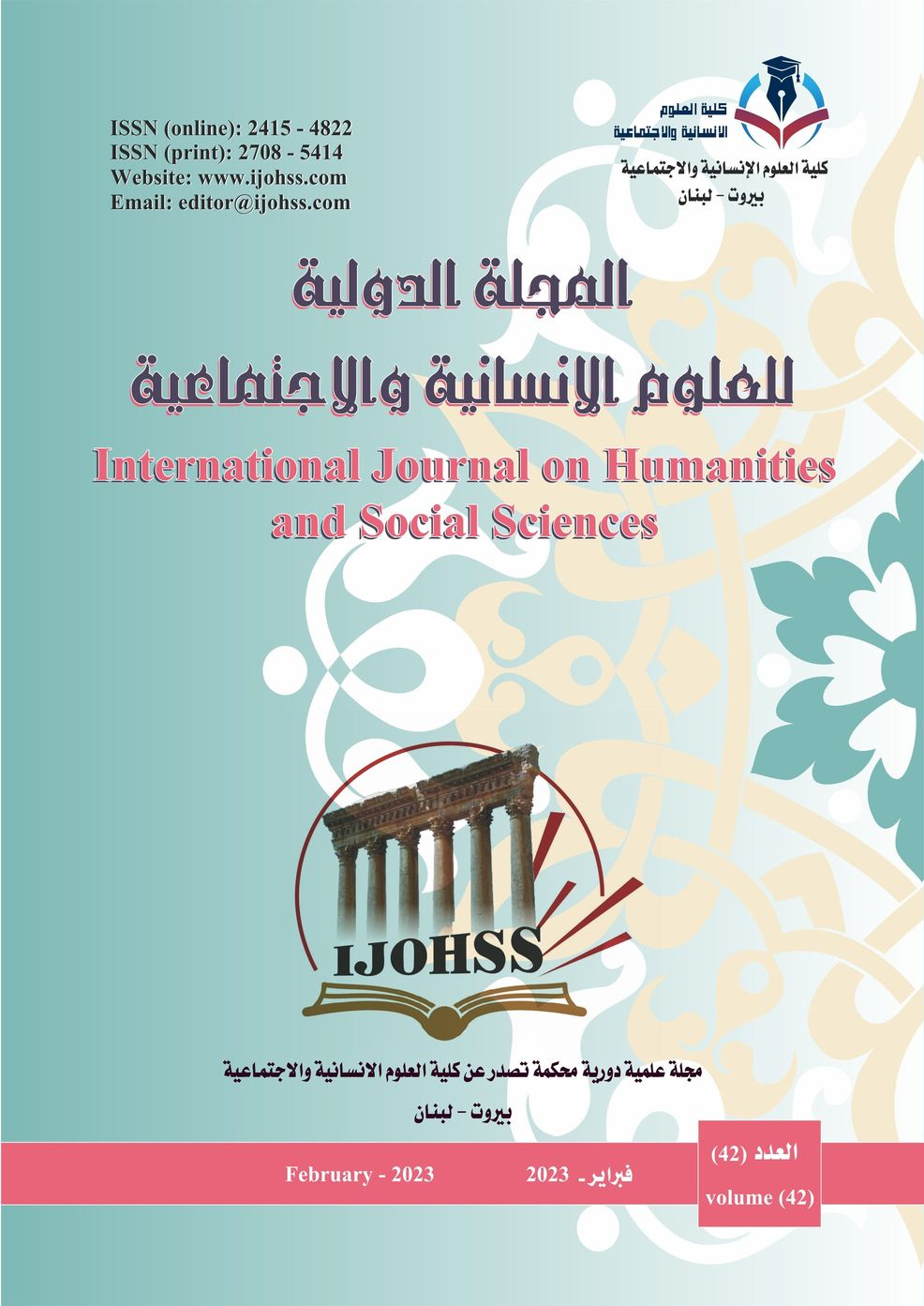Gender Discrimination and Stereotyping of Iraqi Jokes on Facebook Social Network
Abstract
Joke telling is considered as one of the cultural and sociological manifestations of any society. These jokes reflect the ideological socio-cultural points of view of individuals as well as the society as whole. This paper tries to shed light on how jokes create discrimination and serotyping towards women in the Iraqi society. The researcher adopts the critical approaches of analysing such phenomena, as they are more productive in detecting such ideological and stereotyping. The researcher concludes that the collected jokes are used to reflect women stereotype vs. men stereotype, sexually motivated jokes, women's naivety or stupidity, and women wickedness or evilness. Moreover, they vary in expressing and reflecting the negative image(s) of women either explicitly or implicitly using different linguistic tools.
References
2. Berger, A. (1976). Anatomy of the Joke. Journal of Communication, 26:113-5.
3. Boxer, D. and Cortes-Conde, F. (1997). From Bonding to Biting: Conversational Joking and Identity Display. Journal of Pragmatics, 27:275-94.
4. Cameron, D. (2006). Language and Social Politics. London: Routledge.
5. Collinson, D. (1992). Managing the Shop floor: Subjectivity, Masculinity, and Workplace Culture. New York: E. de Gruyter.
6. Garrett, P. (2010). Attitudes to Language. Cambridge: Cambridge University Press.
7. Gruner, R. Charles (2017). Effect of Humor on Speaker Ethos and Audience Information Gain. Journal of Communication. Volume17, Issue3. Pages 228-233. https://doi.org/10.1111/j.1460-2466.1967.tb01181.x
8. Henry, F. and Tator, C. (2002). Discourse of Domination. Toronto: University of Toronto Press.
9. Holmes, Janet (2006). Sharing a laugh: Pragmatic aspects of humor and gender in the workplace. Journal of Pragmatics, Volume 38, Issue 1, PP. 26-50. https://doi.org/10.1016/j.pragma.2005.06.007
10. Kristiansen, G. (2001). Social and Linguistic Stereotyping: A Cognitive Approach to Accents. Estudios Ingleses de la Universidad Complutense, [online] (9), pp. 129-45. Available: https://www.mendeley.com/catalogue/a3415b8b-e019-346f-b5d1-c50a9585474b/
11. Lippi-Green, R. (1994). Accent, Standard Language Ideology, and Discrimination Pretext in the Courts. Language in Society, 23, 163-98.
12. Lippi-Green, R. (1997). English with an Accent: Language, Ideology, and Discrimination in the United States. New York: Routledge. Available: https://www.researchgate.net/publication/260778619_English_with_an_accent_Language_ideology_and_discrimination_in_the_United_States
13. Lull, J. (2003). Hegemony. In G. Dines and J. M. Humez (ed.). Gender, Race, and Class in Media (2nd ed.)(PP. 61-6). Thousand Oaks, CA: Sage Publications.
14. Maehlum, B. (2007). Confrontation. Oslo: Novus.
15. Martin, Rod A. (2007). The Psychology of Humor: An Integrative Approach. New York: Academic Press.
16. Mills, S. (2008). Language and Sexism. Cambridge: Cambridge University Press.
17. Nayef, Heba and El-Nashar, Mohamed (2014). Promoting Masculine Hegemony through Humor: A Linguistic Analysis of Gender Stereotyping in Egyptian Sexist Internet Jokes. International Journal of Linguistic and Communication, December 2014, Vol. 2, No. 4, pp. 84-96.
18. Rappoport, L. (2005). Punchlines: The case for Racial, Ethnic, and Gender Humor. Praeger Publisher: Westport, CT.
19. Skutnabb-Kangas, T. and Phillipson, R. (1994). Linguistic Human Rights: Overcoming Linguistic Discrimination. Berlin: Mouton de Gruyter.
20. van Dijk, T. A. (2001). Critical Discourse Analysis. In D. Schiffrin, D. Tannen, and H. Hamilton. (ed.). The Handbook of Discourse Analysis. (pp. 352-71). Malden, MA: Blackwell Publisher.
21. Wardhaugh, Ronald. (2006). An Introduction to Sociolinguistics. Blackwell Publishing.
22. Winick, C. (1976). The Social Context of Humor. Journal of Communication, 26: 124-8.
Copyright (c) 2023 Lect. Amer Sagheer Allwan Al Amery (Ph.D.)

This work is licensed under a Creative Commons Attribution-NonCommercial-NoDerivatives 4.0 International License.



